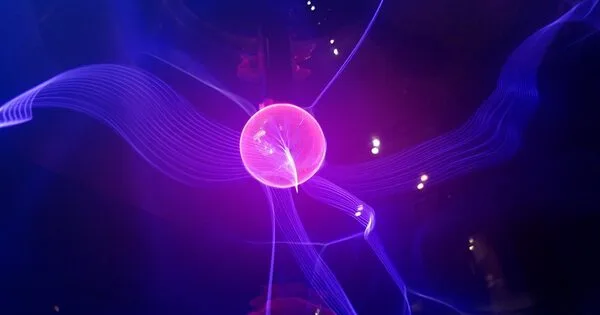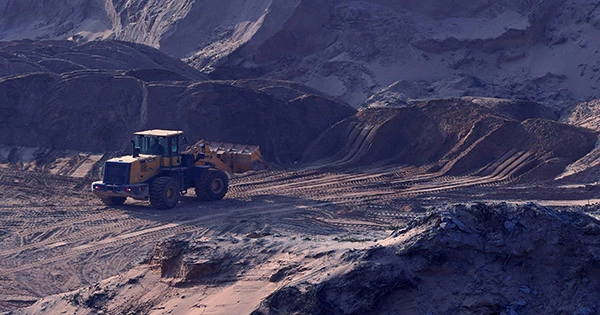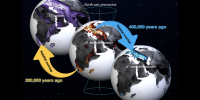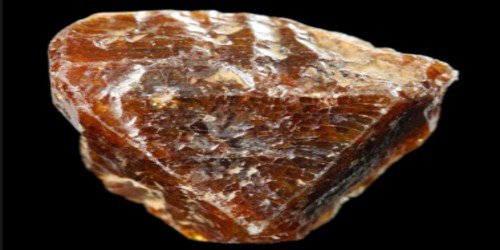Everything is everywhere; under the right conditions, microbial populations can develop and thrive even in seemingly inhospitable environments. This is the case with inactive hydrothermal vents on the seafloor. A multinational team is currently striving to precisely determine how much inorganic carbon can be bound in these conditions.
With its high pressure, darkness, and nutrient scarcity, the deep sea is hardly a welcoming environment. However, in the presence of heat and a large influx of energy-rich fluids, such as those found near active hydrothermal vents, a variety of fish, shellfish, and microbes can settle. What happens to these biotic communities when the source of hot fluids is depleted?
The chimneys build over time as seawater seeps through fractures in the Earth’s crust, warms there, and then dissolves and absorbs minerals on its journey back up to the ocean floor. This hot, mineral-rich, and frequently smoky water finds the most direct path through the Earth’s crust before colliding with cold, oxygen-rich water on the sea floor.
As a result, minerals precipitate and accumulate as chimneys. These hydrothermal vents are energy-rich chemosynthesis environments for microorganisms at the base of food webs. Depending on the location, chimneys at hydrothermal seeps may contain minerals such as copper, zinc, gold, and silver. As a result, there is an increasing interest in using inactive smokers in deep-sea mining operations.
Even forty years after the discovery of the first hydrothermal fields, we constantly learn new things about how these ecosystems work, particularly relating to the amount of CO2 bound up in inactive smokers, but also with regard to the volume of microbial life, its activity, and rates of production.
Dr. Florence Schubotz
When the flow of mineral-rich fluids dries up, the black smokers become inactive. Larger organisms migrate away to the next vent, but the microbial communities have ways adapt to the new conditions. “Even forty years after the discovery of the first hydrothermal fields, we constantly learn new things about how these ecosystems work,” says Dr. Florence Schubotz of MARUM — Center for Marine Environmental Sciences at the University of Bremen, “particularly relating to the amount of CO2 bound up in inactive smokers, but also with regard to the volume of microbial life, its activity, and rates of production.”
Determining how densely inactive smokers are colonized is the central focus of a research project in which Schubotz is working. The work involves sampling at the exact area where the first hydrothermal vents were discovered in the eastern Pacific around four decades ago. “The initial results indicate that even inactive smokers are important locations for microbial activity and the production of organic carbon on the sea floor.
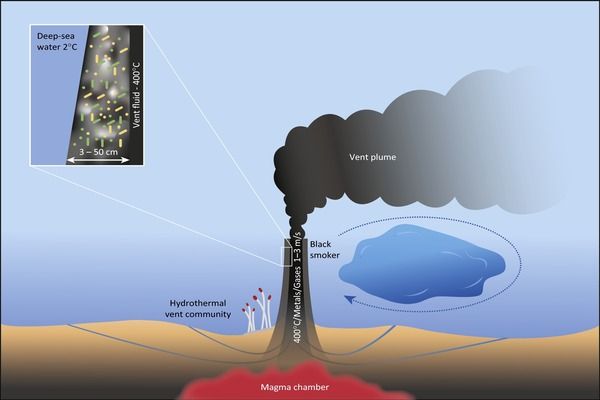
We are only starting to comprehend how the carbon cycle works in the deep water. It is certain that carbon is fixed in such hotspots. “But,” Schubotz continued, “we do not yet understand these ecosystems well enough to estimate the magnitudes involved.” Large sections of the ocean floor have yet to be studied, and unknown hydrothermal systems await discovery.
Every spreading center at a plate boundary has the potential for colonization. The samples from the eastern Pacific will be a useful starting point because the scope of microbial communities in this area is already well understood. The international team examined and compared samples from active and inactive smokers.
The samples were collected during three missions between 2019 and 2021, in part with the assistance of the manned submersible research vehicle Alvin, from the East Pacific Rise (9 degrees north), an oceanic ridge at a Pacific plate boundary. Their goal is to gain a deeper understanding of the deep-sea ecology and the relationships between different creatures, as well as to compute metabolic rates from active to inactive systems for the first time. “Without this kind of data,” according to the study, “our understanding of the element cycles in the inactive-chimney ecosystem and their possible influence on the biochemistry of the deep sea remains incomplete.” The team highlights the importance of conducting such investigations before making any choices about deep-sea mining.
The biogeochemistry at the sea floor and the interactions of marine ecosystems with the environment are also one of the core research themes within the Cluster of Excellence ‘The Ocean Floor — Earth’s Uncharted Interface’.
